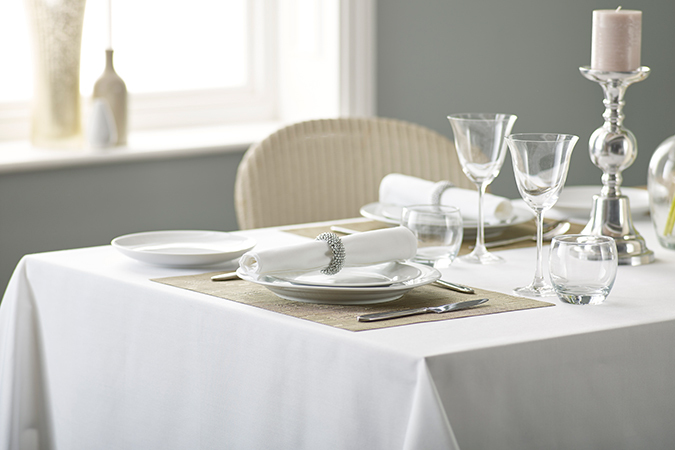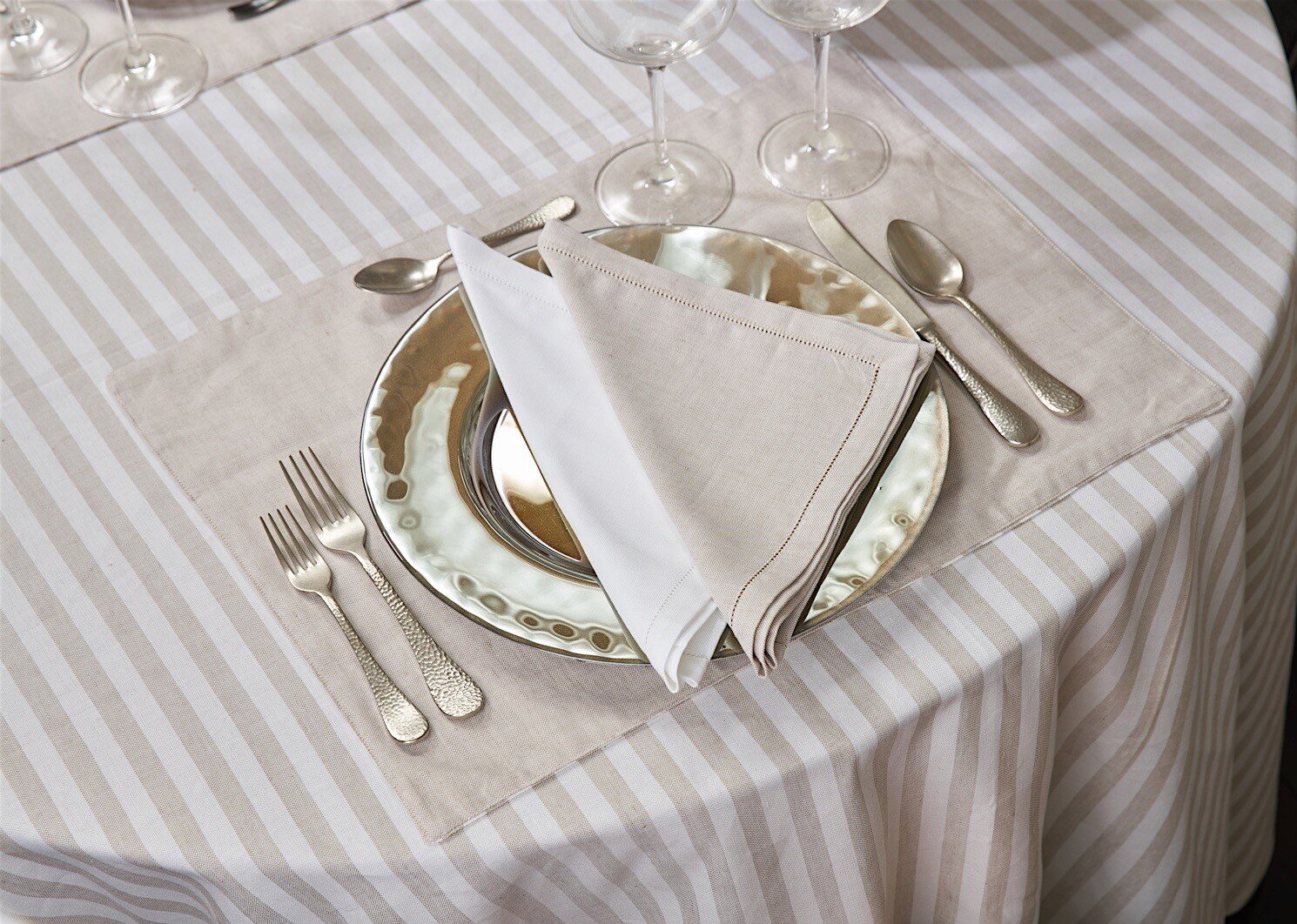Imaginative Table Runner Uses: Beyond the Table
Imaginative Table Runner Uses: Beyond the Table
Blog Article
Linen Material Innovations: Discovering Modern Trends and Creative Applications in Layout and Textile Industry
From lasting production techniques to advanced weaving innovations, the evolution of bed linen is reshaping the landscape of the fabric market. As we dive into the realms of innovative style applications and the development of bed linen blends and hybrid fabrics, a brand-new chapter unravels in which bed linen's duty in future fabric developments takes center stage.
Sustainable Practices in Linen Manufacturing
Lasting methods in bed linen manufacturing have come to be progressively critical in the fabric industry's efforts to minimize environmental effect and advertise ethical sourcing methods. Bed linen, an all-natural fiber stemmed from the flax plant, supplies a range of advantages such as breathability, sturdiness, and biodegradability. Nevertheless, typical approaches of linen production can involve considerable water usage, pesticide use, and energy-intensive processes.
To attend to these difficulties, numerous fabric makers are embracing sustainable methods throughout the bed linen manufacturing procedure. This includes sourcing flax from natural ranches that avoid harmful chemicals and chemicals, implementing water-efficient retting strategies to extract fibers from the flax stalks, and making use of green dyes and coatings. In addition, some companies are buying renewable resource sources to power their manufacturing centers and minimizing waste through recycling and upcycling campaigns.
Technical Improvements in Bed Linen Weaving
With the growing emphasis on lasting techniques in linen manufacturing, the textile market is currently witnessing a rise in technical developments particularly intended at transforming the art of linen weaving. These advancements are improving the method linen materials are created, offering enhanced efficiency, top quality, and imagination in weaving techniques.
Among the vital technical improvements in linen weaving is the assimilation of digital looms. These advanced looms are equipped with software program that enables complex and intricate designs to be woven with precision. By digitizing the weaving procedure, makers can achieve higher uniformity and accuracy in their linen fabrics.
In addition, innovations in yarn spinning technology have actually enabled the manufacturing of finer and more long lasting linen yarns - table cloths. This causes softer and smoother bed linen fabrics that retain their quality even after numerous uses and laundries
Additionally, the advancement of environment-friendly dyeing procedures and coatings for bed linen textiles is obtaining grip. These lasting methods not just decrease the environmental effect but likewise accommodate the enhancing customer need for fairly created textiles.
Creative Layout Applications for Bed Linen
Cutting-edge imaginative techniques are significantly shaping the innovative design applications for linen in the textile sector. Linen's all-natural visual charm and ability to mix with other fabrics make it a favorite selection for producing distinct garments and accessories that cater to the ecologically conscious customer.
In addition, designers are explore bed linen in home decor, using its breathable and resilient nature to craft stylish home furnishings such as drapes, bed linens, and upholstery. The appearance and drape of linen bring a sense of class and comfort to indoor rooms, including a touch of elegance to contemporary homes.

Bed Linen Blends and Hybrid Fabrics

Crossbreed fabrics, on the other hand, take the idea of blending an action further by including extra components such as metal strings, recycled materials, or conductive fibers. These innovative fabrics not just expand the style possibilities however likewise introduce functional aspects like conductivity, antimicrobial residential or commercial properties, or boosted longevity. Hybrid materials are progressively being used in different sectors, consisting of fashion, interior decoration, and technical textiles, where the demand for multifunctional products gets on the surge.
Linen's Duty in Future Fabric Innovations

In the world of future fabric technologies, linen is anticipated to be a principal in the growth of sophisticated functional fabrics. Designers and researchers are checking out ways to boost linen's inherent high qualities via technological advancements, such as integrating smart fabrics, nanotechnology, and performance coatings. These advancements aim to elevate bed linen's efficiency characteristics, making it ideal for a more comprehensive series of applications, from activewear to safety apparel.
In addition, the combination of linen with various other natural or artificial fibers opens up limitless opportunities for producing novel fabrics with one-of-a-kind buildings and functionalities. By leveraging bed linen's attributes and discovering cutting-edge blends, the textile industry is positioned to introduce exciting growths that accommodate developing consumer requirements and sustainability needs.
Final Thought
In conclusion, the exploration of lasting practices, technological improvements, creative continue reading this design applications, linen blends, and its role in future fabric technologies highlight the continuous advancement of bed linen fabric in the modern-day design and textile industry. With a focus on advancement and creativity, the convenience and environmentally friendly nature of linen make it a valuable material for makers and designers alike, paving the method for additional developments and innovations in the area of textiles.
As we delve into the worlds of creative style applications and the emergence of bed linen blends and hybrid fabrics, a brand-new phase unravels in which linen's role in future fabric developments takes center phase.
Exploring the fusion of bed linen with various other materials has actually led to the introduction of cutting-edge blends and hybrid textiles in the contemporary textile sector. Bed linen blends offer a distinct combination of the attributes of bed linen with those of various other fibers, resulting in materials that possess improved properties such as enhanced durability, enhanced draping, and reduced wrinkling.The advancement of linen blends and hybrid textiles has actually established the stage for Bed linen to play a her comment is here critical role in driving future textile innovations.In the world of future fabric advancements, linen is anticipated to be a crucial player in the advancement of sophisticated useful fabrics.
Report this page